
As an eCommerce store owner or marketer, your product descriptions do more than just inform; they compel, persuade, and most importantly, boost your visibility in search engine results.
Creating compelling product descriptions that are optimized for SEO is both an art and a science, offering a unique opportunity to enhance your online presence and drive sales.
In this blog post, you will learn 10 powerful tips to improve your product description SEO.
What are SEO Product Descriptions?
An SEO product description is a strategically written content piece designed to do three key things: inform shoppers about a product, convert browsers into buyers, and boost your product’s visibility in search engine results.
Here’s an example of an SEO product description from Perfect Keto.
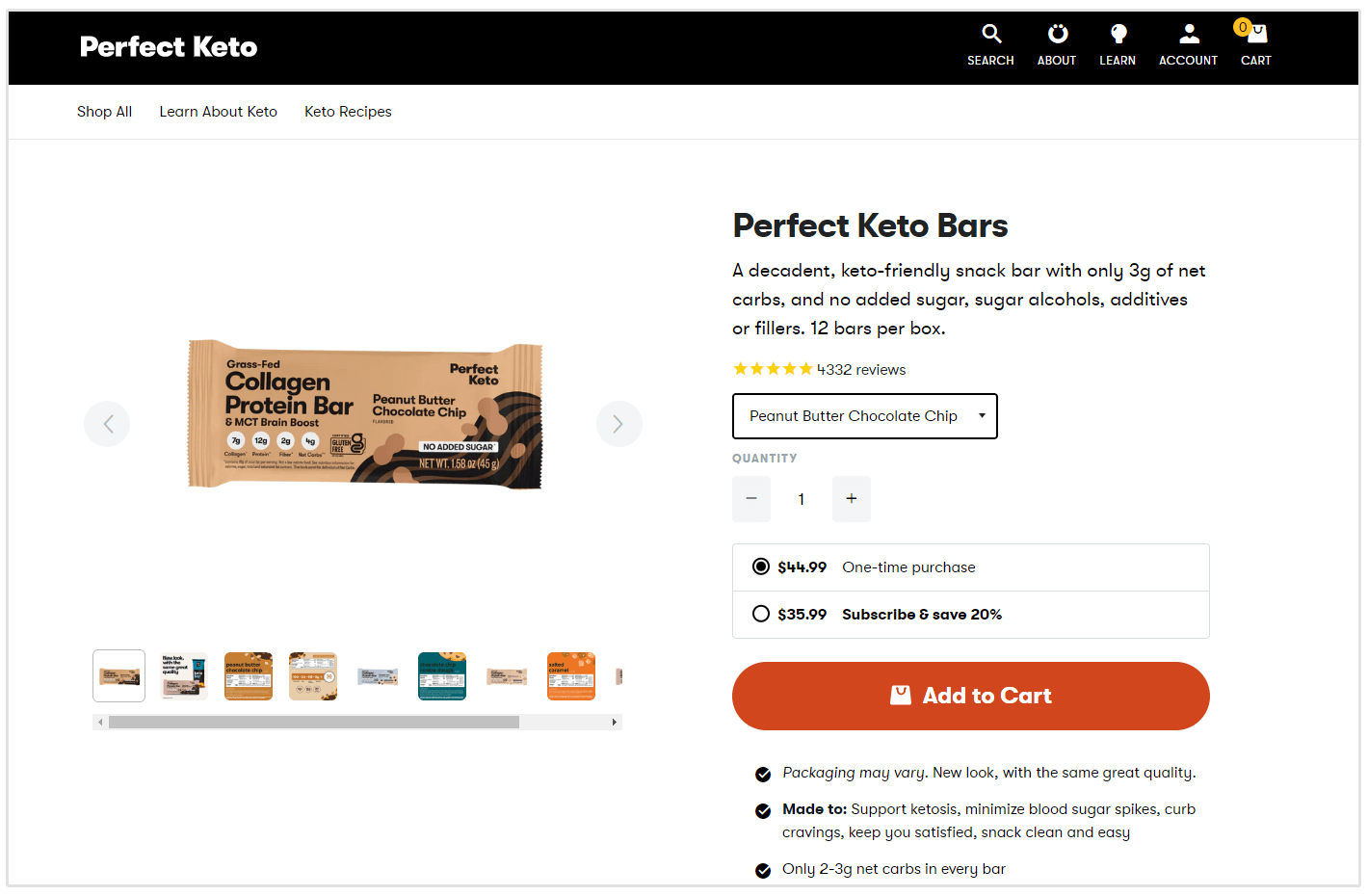
This product description page consists of a brief description of the product, ingredients, reviews, FAQs, and other additional information.
This is a perfect example of a good SEO product description and it contains all of the elements of an SEO-optimized description page.
And the results show, currently this page is ranking in the first position for several focus keywords such as “keto bar”, “ketogenic bars”, “keto bars”, etc.
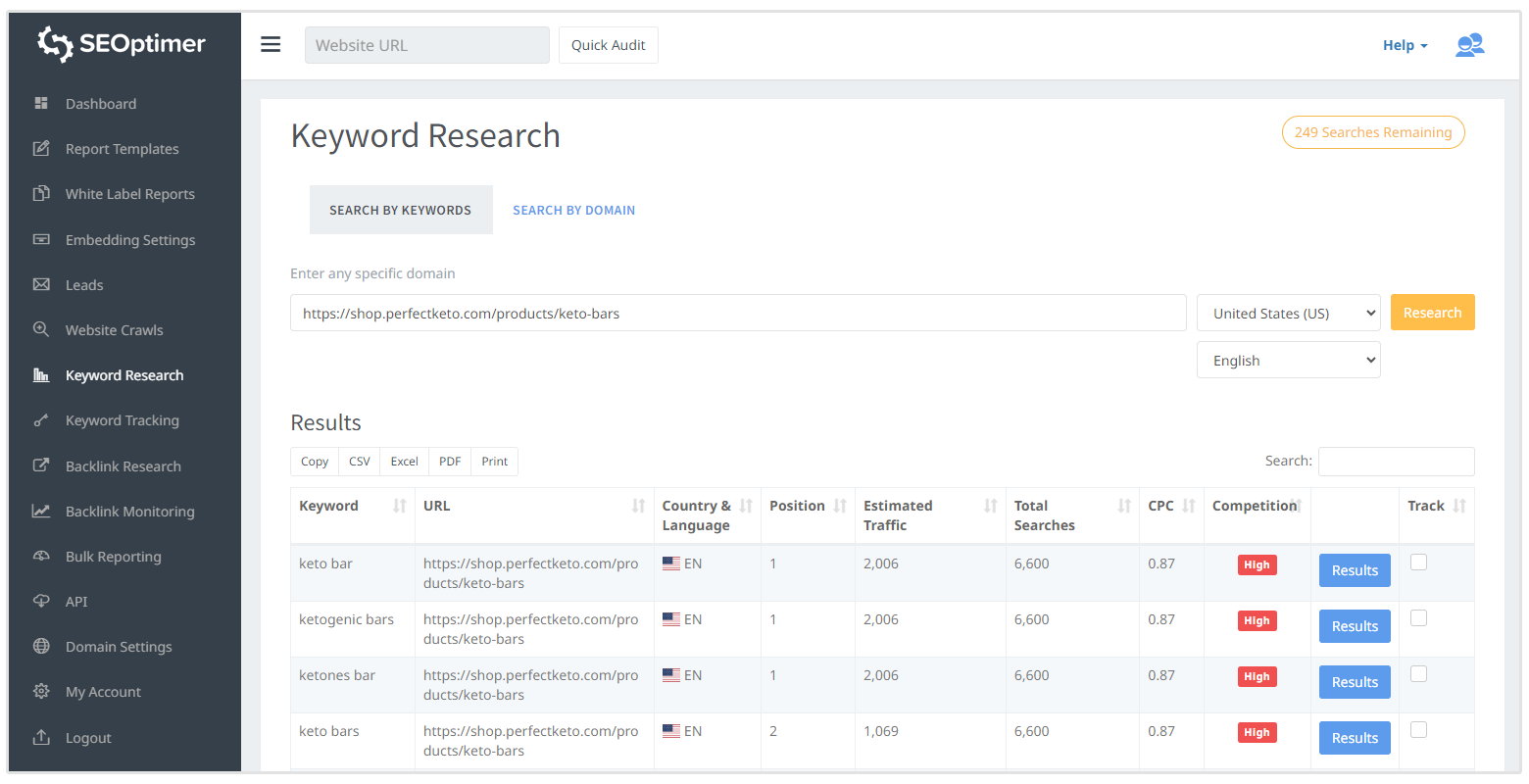
How Long Should SEO Product Descriptions Be?
Most SEO and marketing experts suggest aiming for 300 to 400 words for each product description. However, there's no one-size-fits-all when it comes to product description length.
The actual length should be determined by the product's complexity and the need to provide enough information to the reader.
For instance, if you’re selling consumable products like food, then it’s advisable to add nutritional information and ingredients for people to read. Whereas a product description for a simple product such as blue-light blocking glasses doesn’t require such in-depth information.
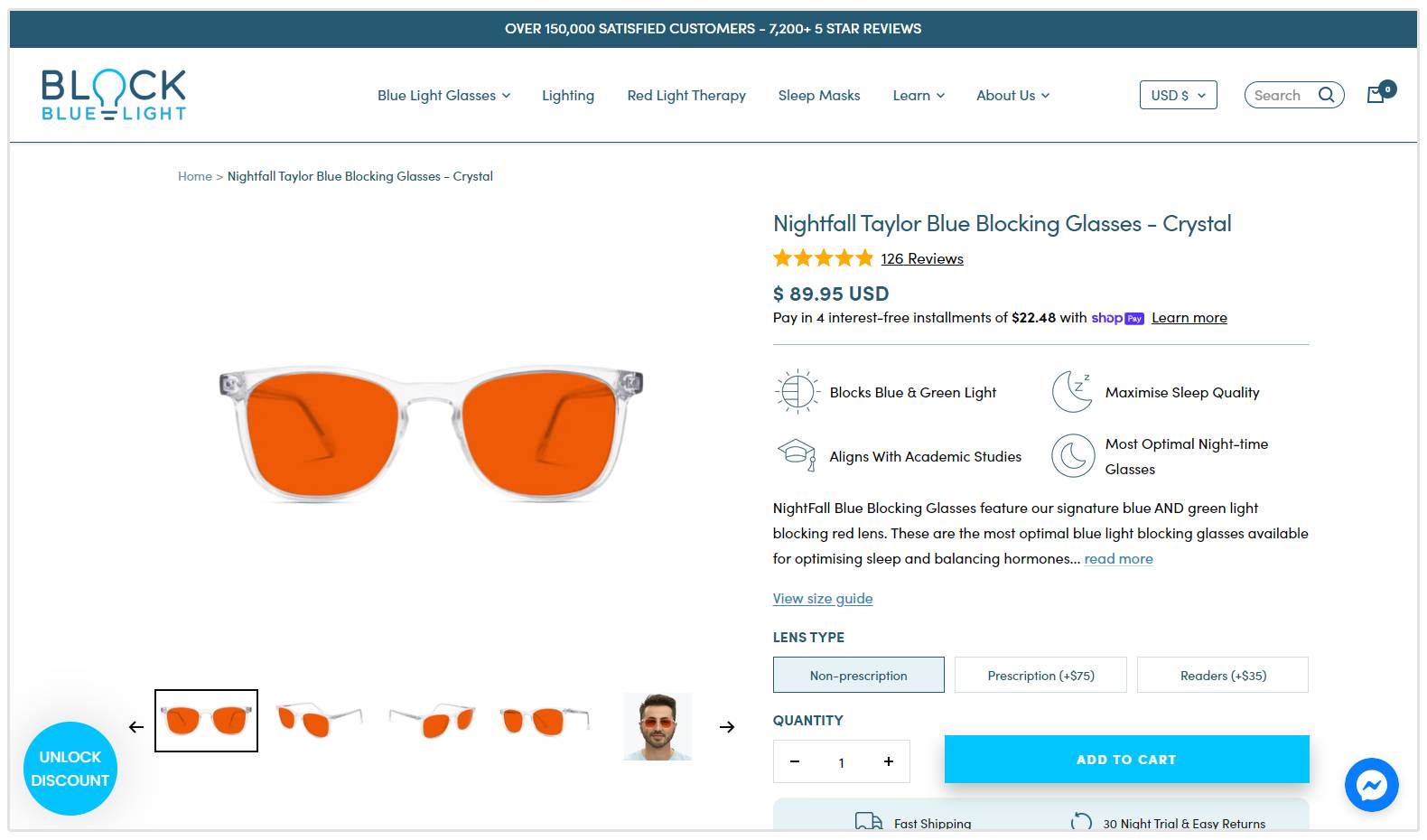
Tips for Creating Good SEO Product Descriptions
Use the Right Target Keywords
The foundation of strong SEO product descriptions lies in using the right keywords.
Using relevant keywords throughout your product descriptions improves your chances of ranking higher in search engine results pages (SERPs).
When a customer searches for a product using those same keywords, your product is more likely to appear at the top, driving organic traffic to your store.
There are several ways to identify the optimal keywords for your product descriptions:
- Start with Seed Keywords: Brainstorm broad keywords directly related to your product category.
- Utilize Keyword Research Tools: Free and paid tools like Google Keyword Planner or SEOptimer can help you discover relevant keywords, search volume (how often a term is searched for), and competition level.
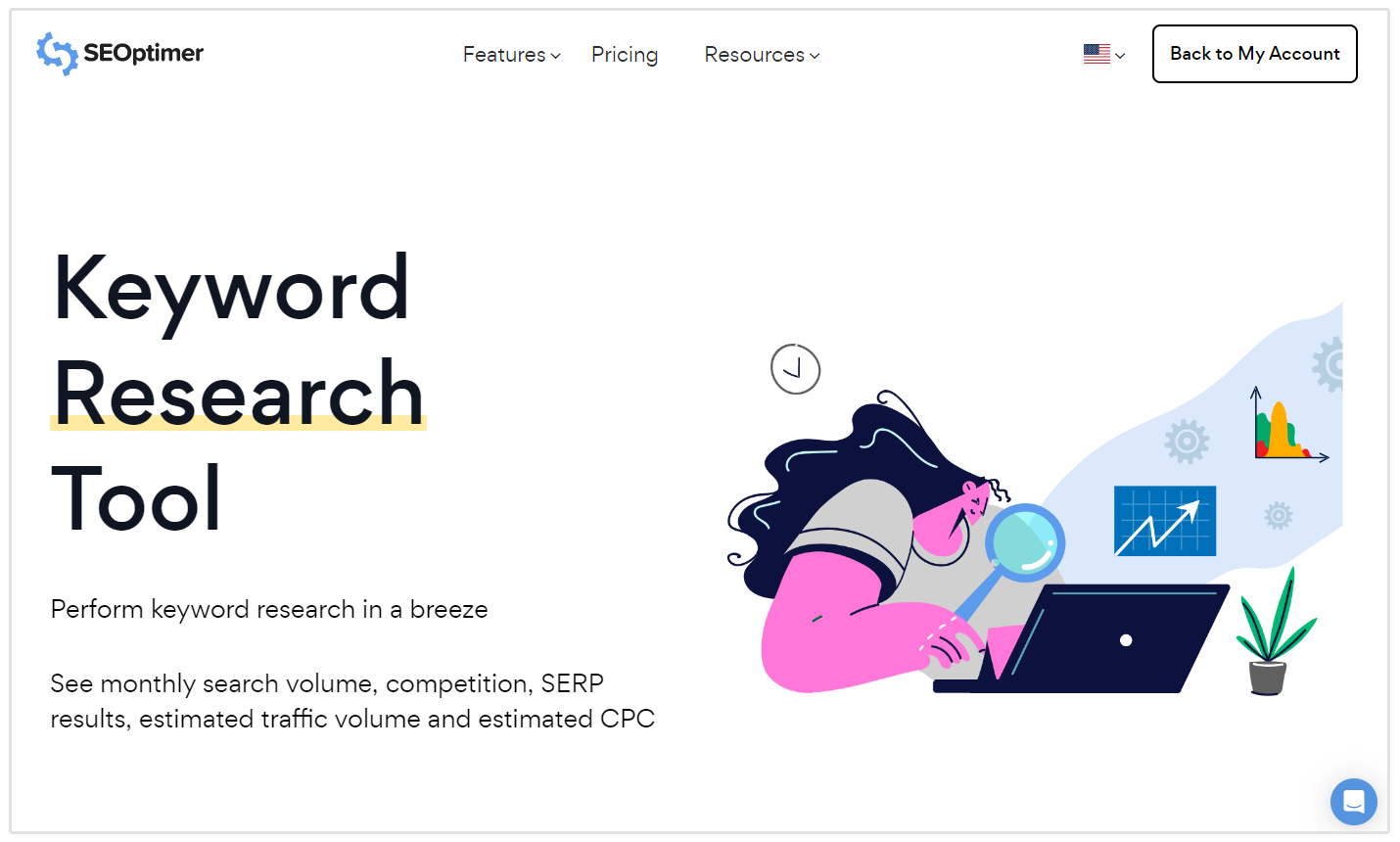
- Analyze Your Competitors: Take a peek at your competitor's product descriptions to see which keywords they're using for similar products.
- Consider Long-Tail Keywords: These are more specific keyword phrases that target users further along the buying journey. For example, instead of just "running shoes", a long-tail keyword could be "women's running shoes for wide feet".
Remember, keyword stuffing should always be avoided. So focus on integrating keywords organically throughout your descriptions while prioritizing providing valuable information for your customers.
Place Target Keywords in All the Important Places
Now that you understand the importance of using the right keywords, it's crucial to understand that the placement of these keywords is just as important as selection.
Here's a checklist of important places to embed your target keywords for optimal SEO impact:
- Product Title: Always include your target keyword naturally at the beginning or very near to the start of your product title for maximum visibility in search results.
- Meta Description: This concise product summary displayed in search results is your chance to entice clicks. Weave your target keyword into the meta description to give searchers a clear understanding of what your product offers.
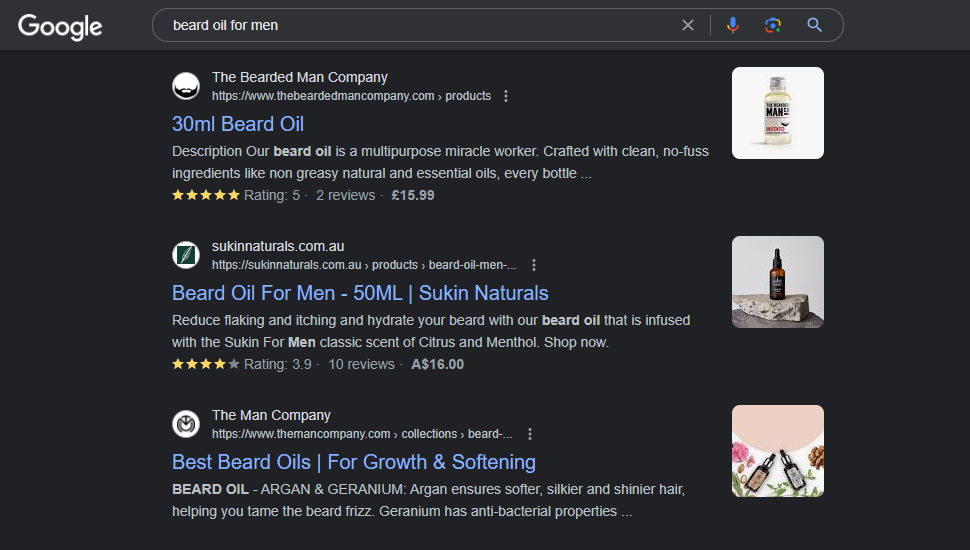
- Headings and Subheadings: Add your target keyword to headings and subheadings. This improves readability for users and strengthens SEO signals.
- Bullet Points: Bullet points and lists are a fantastic way to present key features and benefits. Don't miss the opportunity to strategically include your target keyword within these sections.
- Body Text: Naturally integrate your target keyword throughout the body text of your product description. Focus on providing valuable information while ensuring the keyword placement feels organic and informative.
- Image Alt Text: Don't forget about image optimization. Include your target keyword in the alt text associated with your product images. This helps search engines understand the image content and further strengthens your SEO efforts.
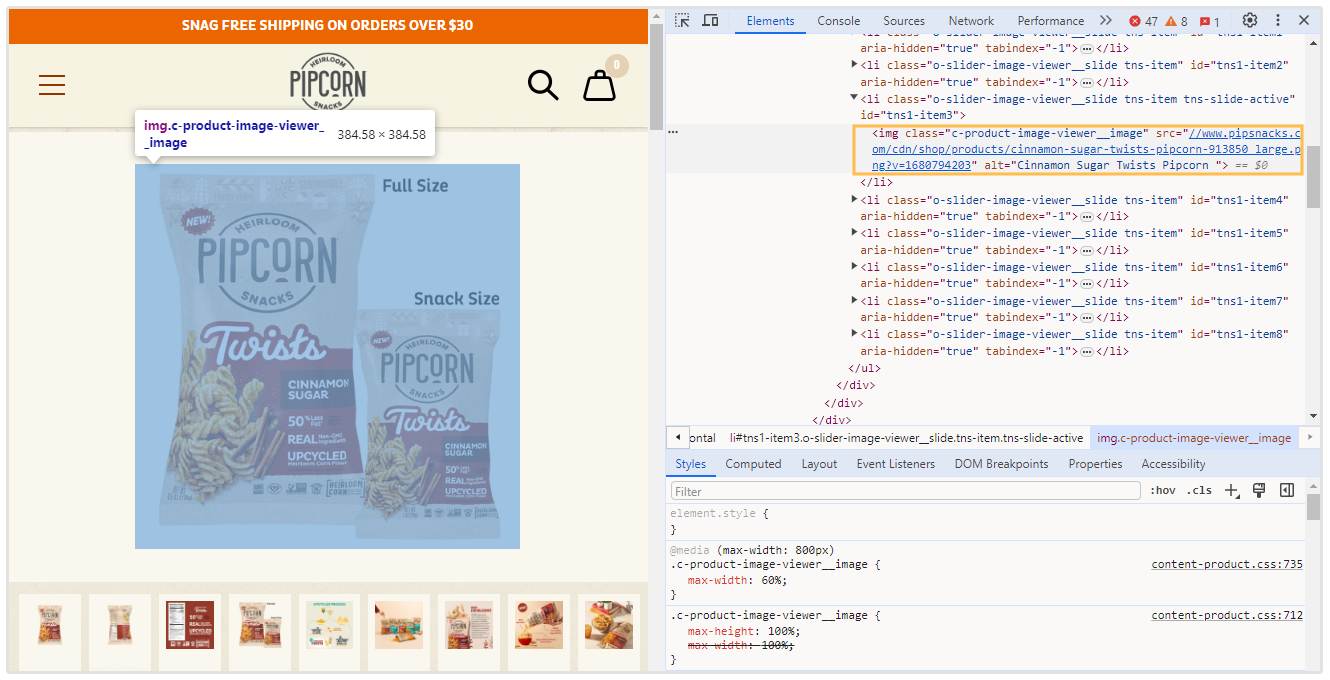
Write for Your Audience
While search engines play a vital role in product discovery, never lose sight of the fact that you're ultimately writing for human customers.
This might seem counterintuitive for SEO, but here's why prioritizing human-centric writing actually strengthens your SEO efforts:
- Product descriptions that are clear, informative, and engaging for humans naturally lead to better user experience. Users spend more time on your page, potentially scrolling through additional products or reading customer reviews. These send positive signals to search engines, boosting your product page's ranking.
- Search engines are getting smarter, focusing on the context and intent behind keywords, not just their mere presence. Writing for humans naturally encourages you to use keywords organically within a clear and well-structured description. This provides search engines with valuable context about your product.
- Engaging product descriptions that resonate with your target audience are more likely to convert browsers into buyers.
Remember, SEO and user experience work hand-in-hand.
Focus on creating informative and engaging content that speaks directly to your ideal customer. A good example of a brand that got this right is Dr. Squatch, an eCommerce store selling natural soaps for men.
For instance, here’s the description of their Pine Tar soap for men:
“Made with real pine extract, this all-star bar is as tough as a freshly cut bat. A true MVP of the shower, this heavy-hitter knocks out grime with its gritty composition and ultra-manly, woodsy scent. Toss in the exfoliating oatmeal and the super-soothing shea butter, and you've got a bullpen of natural ingredients that will strike out any stink.”
To appeal to their audience, they use masculine words such as “tough”, “true MVP”, “heavy-hitter”, “ultra manly”, etc. in their product descriptions and pages.
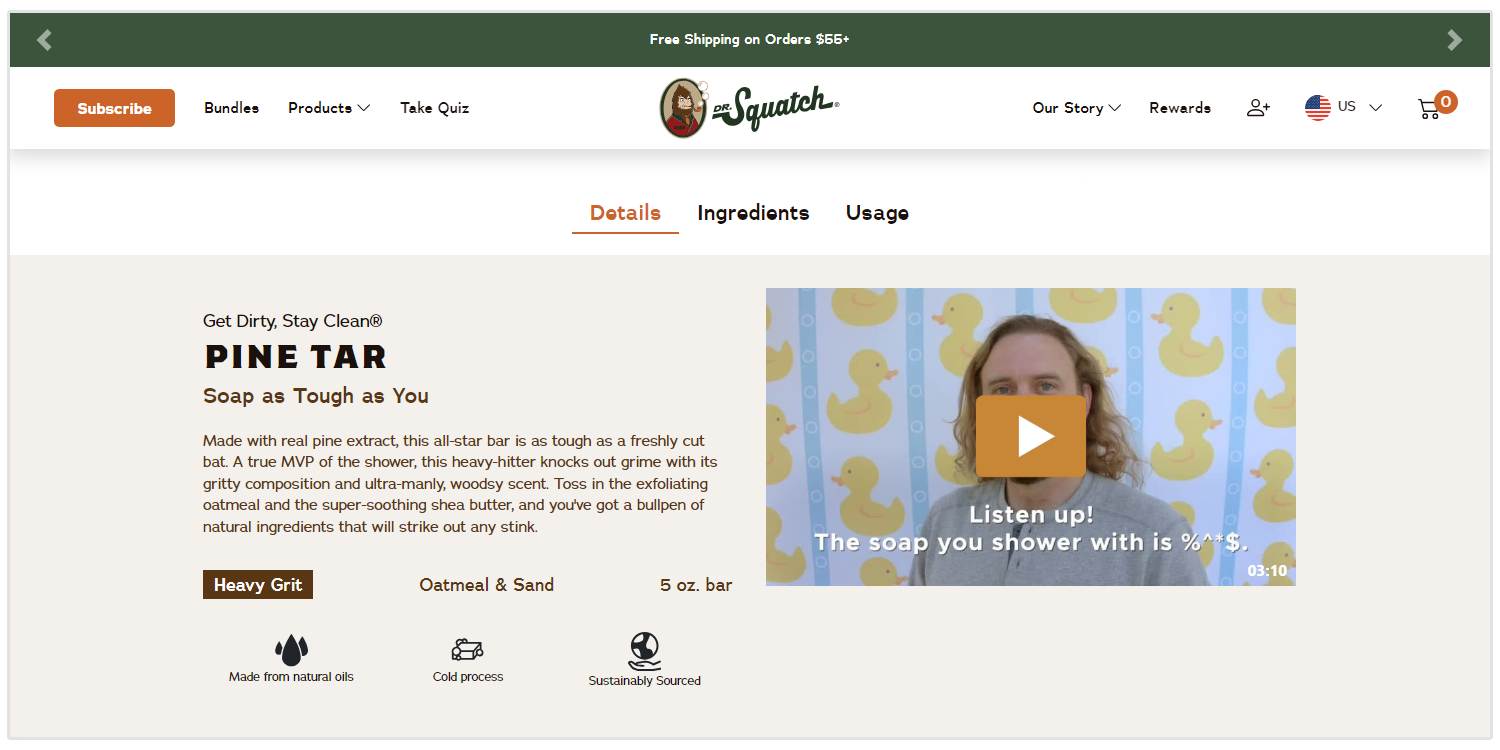
Benefits Over Features
Search engines are getting better at understanding user intent.
By emphasizing the benefits your product solves for customers' problems, your descriptions become more relevant to search queries, which could potentially boost your ranking.
Furthermore, by focusing on benefits, you underscore how your product solves a problem or improves the customer's life. This not only makes your product more desirable but also positions your brand as a solution provider.
For example, here’s the product page for one of Secretlab’s new chairs. As you can see, they clearly highlight the benefits of using this product for work and play.
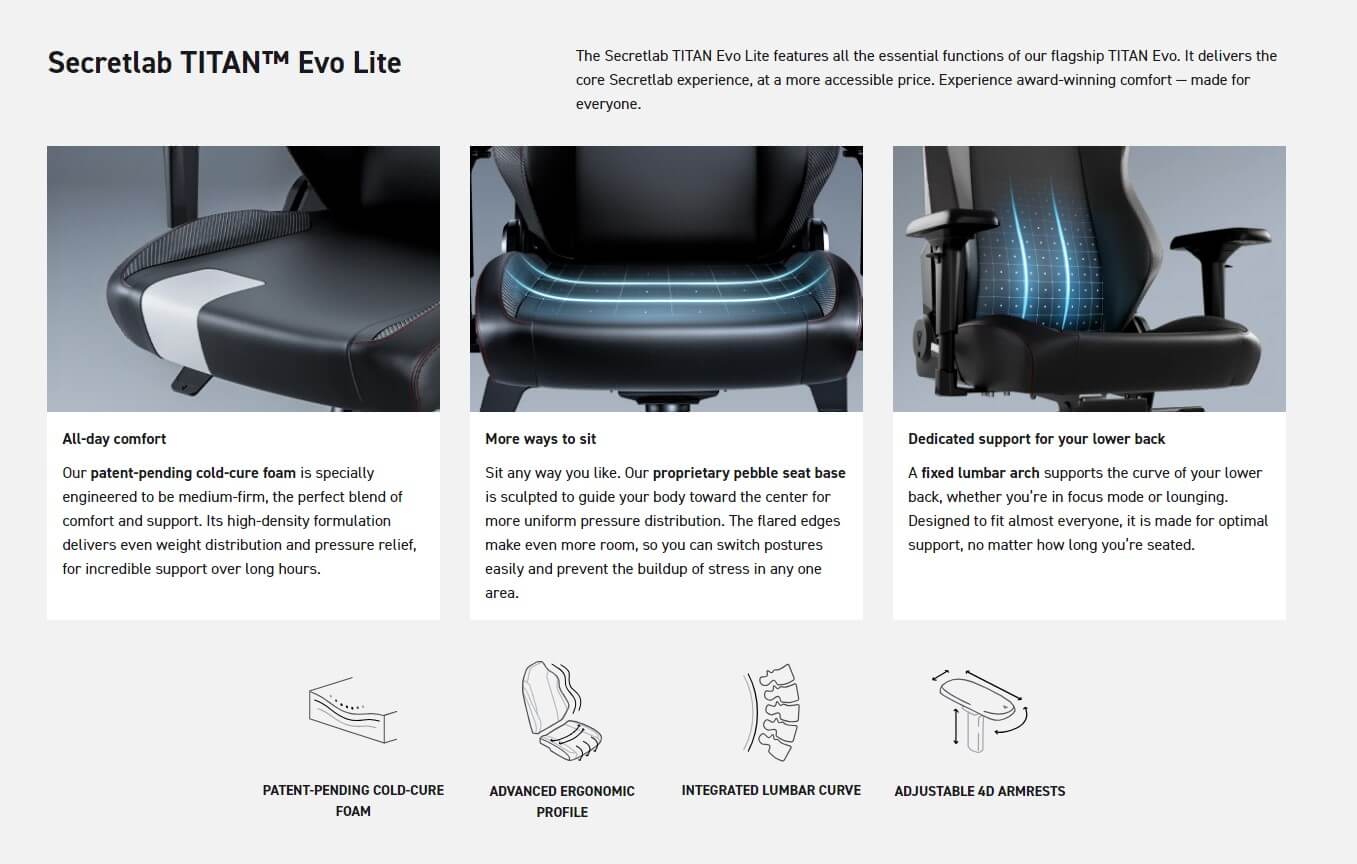
Simplify Your Writing
Simplicity in writing is a strategic tool that improves comprehension, engagement, and action. Clear, concise writing cuts through the noise and delivers your message with impact.
Here's how to keep your writing short and easy to understand:
- Use short sentences and clear language.
- Avoid jargon and technical terms. If you do need to use them, provide a simple explanation.
- Focus on active voice for a more engaging tone.
- Break up long paragraphs with bullet points and subheadings for better readability.
Tools like Hemingway App can be used to scan the readability of your product descriptions.

I’d try to simplify the writing to Grade 5 level because it is simple enough for everyone to understand, yet you can still describe advanced features and concepts.
Add Structured Data to Product Descriptions
Structured data is a standardized format used to provide information about a page and classify the page content.
In simpler terms, it's like giving search engines a detailed roadmap of your site's content, making it easier for them to understand, categorize, and display your products in relevant searches.
By using structured data, you can provide search engines with extra details about your products, like prices, availability, brand names, and even reviews. This allows search engines to display richer snippets in search results, potentially increasing click-through rates and attracting more qualified traffic to your store.
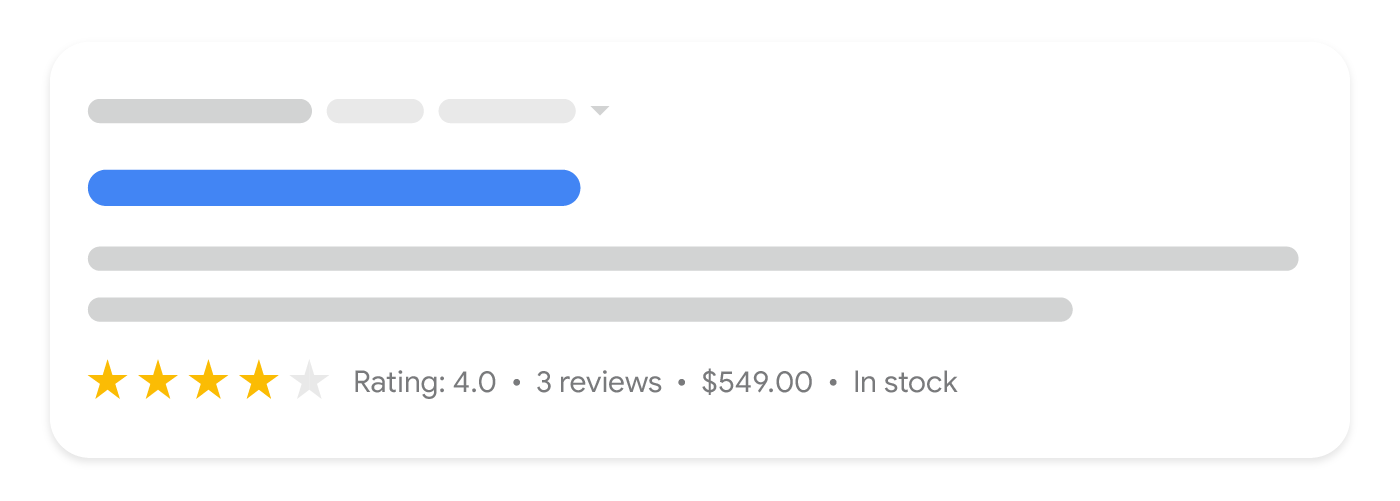
Adding structured data to product pages on popular eCommerce platforms like Shopify and WooCommerce doesn't require extensive coding knowledge.
Many modern eCommerce website builders already have this functionality, and if not, there are several plugins that can be used to implement structured data for product descriptions.
For instance, the Shopify app store shows more than 60 apps if you search for “rich snippets”, so you’ll be able to easily find a relevant plugin if needed.
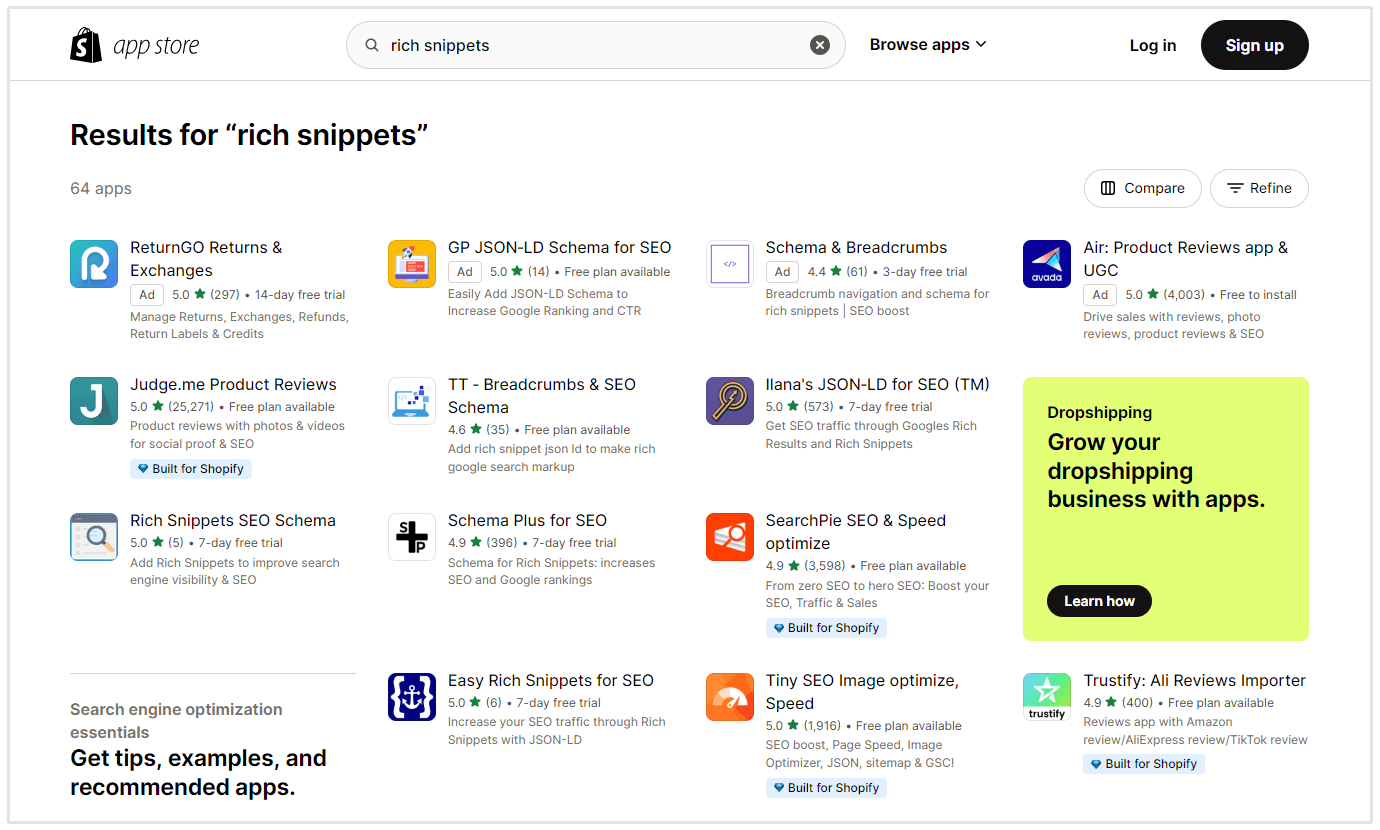
Add Trigger Words
While SEO best practices emphasize logic and clarity, don't underestimate the power of emotions in crafting compelling product descriptions.
Strategic use of power words or "trigger words" can grab attention, evoke emotions, and inspire action from visitors.
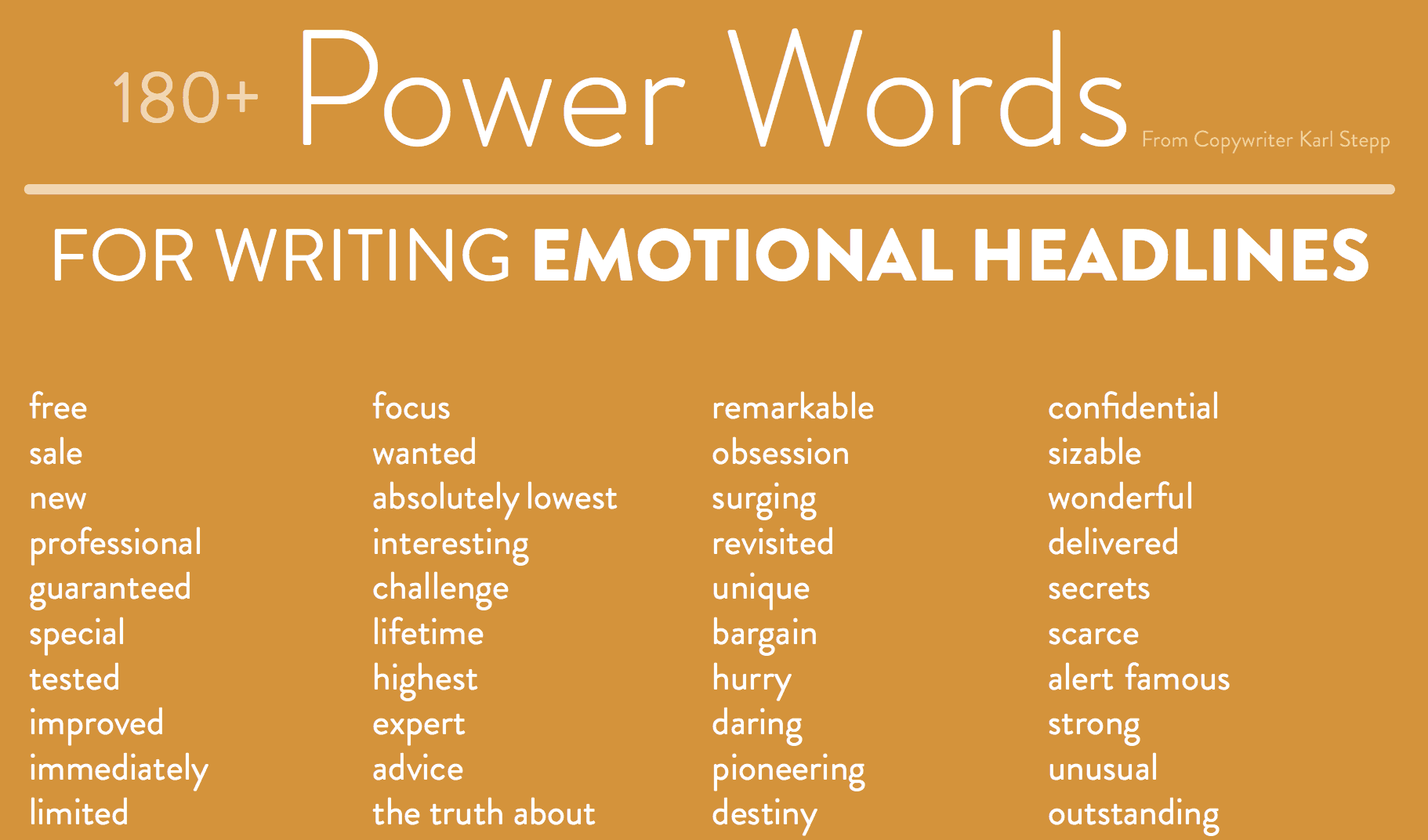
Here's how adding trigger words to product descriptions can help with SEO:
Words that spark an emotional response make your product descriptions more engaging. Users are more likely to spend time reading descriptions that resonate with their desires or solve their pain points. This positive user behavior sends positive signals to search engines, potentially boosting your ranking.
Power words can create a sense of urgency or desirability around your products. This can lead to users lingering on your product pages, considering add-ons, or ultimately converting into buyers. Higher conversion rates are a positive SEO indicator for search engines.
Many power words are naturally linked to broader search queries. For example, using a word like "revolutionary" might also connect your product description with searches for "latest innovations" or "cutting-edge technology." This can expand your product's reach in search results.
Examples of power words include:
- Urgency: Limited time, exclusive, once-a-year
- Benefit-driven: Guaranteed, effortless, transformational
- Emotional: Stunning, breathtaking, confidence-boosting
Add Headers to Product Descriptions
Think of your product descriptions as mini-landing pages.
Just like landing pages, well-structured headers play a crucial role in both user experience and SEO for your product descriptions.
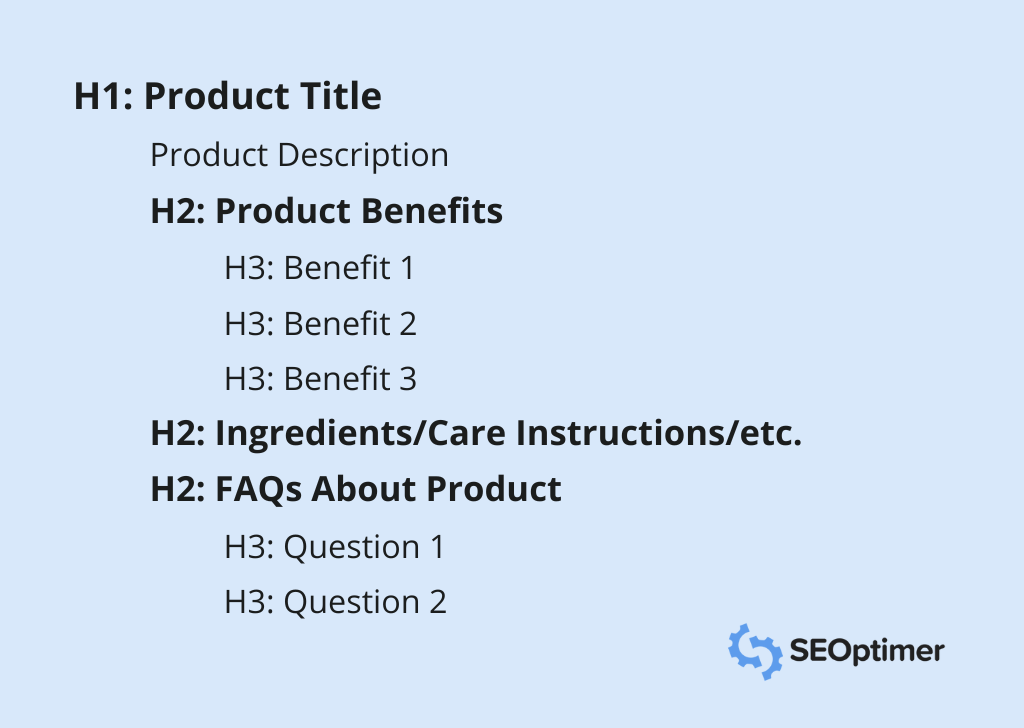
Search engines use headers to understand the structure and content hierarchy of your product pages. Strategic use of relevant headers can help search engines grasp the key features and benefits of your product, potentially improving its ranking for relevant searches.
Add a Clear CTA
From an SEO perspective, integrating a clear and compelling CTA into your product pages does more than just encourage conversions—it plays an important role in enhancing your site's visibility and relevance.
So how can a CTA actually boost your SEO?
- Improves User Experience: A clear CTA guides users effortlessly to what they should do next, reducing bounce rates and increasing time on site—two factors Google considers when ranking pages.
- Increases Page Engagement: By inviting users to take action, whether it’s “Buy Now,” “Learn More,” or “Sign Up,” you're fostering interaction. Pages with higher engagement levels signal to search engines that your content is valuable, thus improving your SEO rankings.
- Enhances Content Relevance: A CTA that aligns with the user's intent makes your page more relevant to their search query. This relevance is key to ranking higher in search engine results pages (SERPs).
Compress Images for Faster Page Loading
High-quality product images are an essential element of compelling product descriptions.
However, large, high-definition images can significantly increase your site’s download size and as a result, slow down your website's loading speed.
If you want to check your page download size and if your site loads fast enough, run a quick SEO audit of your product pages.
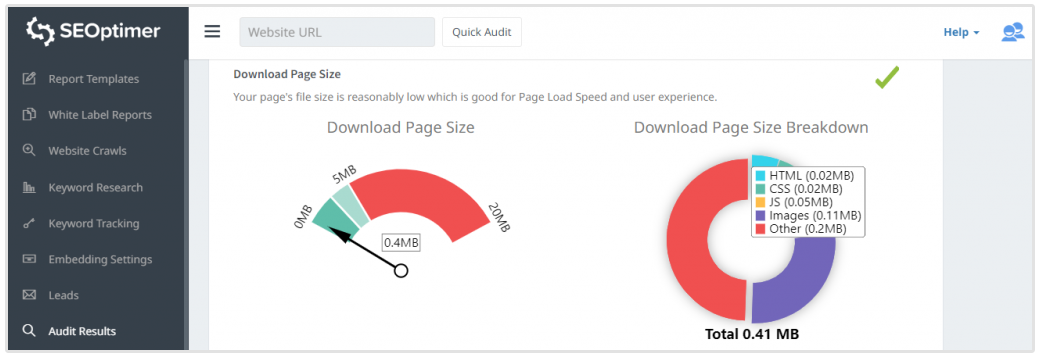
If your product pages take too long to load due to bulky images, it can lead to frustrated users bouncing off your site and potentially harm your SEO ranking.
This is where the power of image compression comes in.
Image compression reduces the file size of your images without sacrificing significant visual quality. This allows product pages to load faster, keeping users engaged and improving overall user experience.
At SEOptimer, we try to keep all our images on our site below 200KB in size to ensure that pages aren’t slowed down unnecessarily.
Luckily there are several free image compression tools (TinyPNG, ShortPixel, etc.) that you can use to reduce the size of your product images.
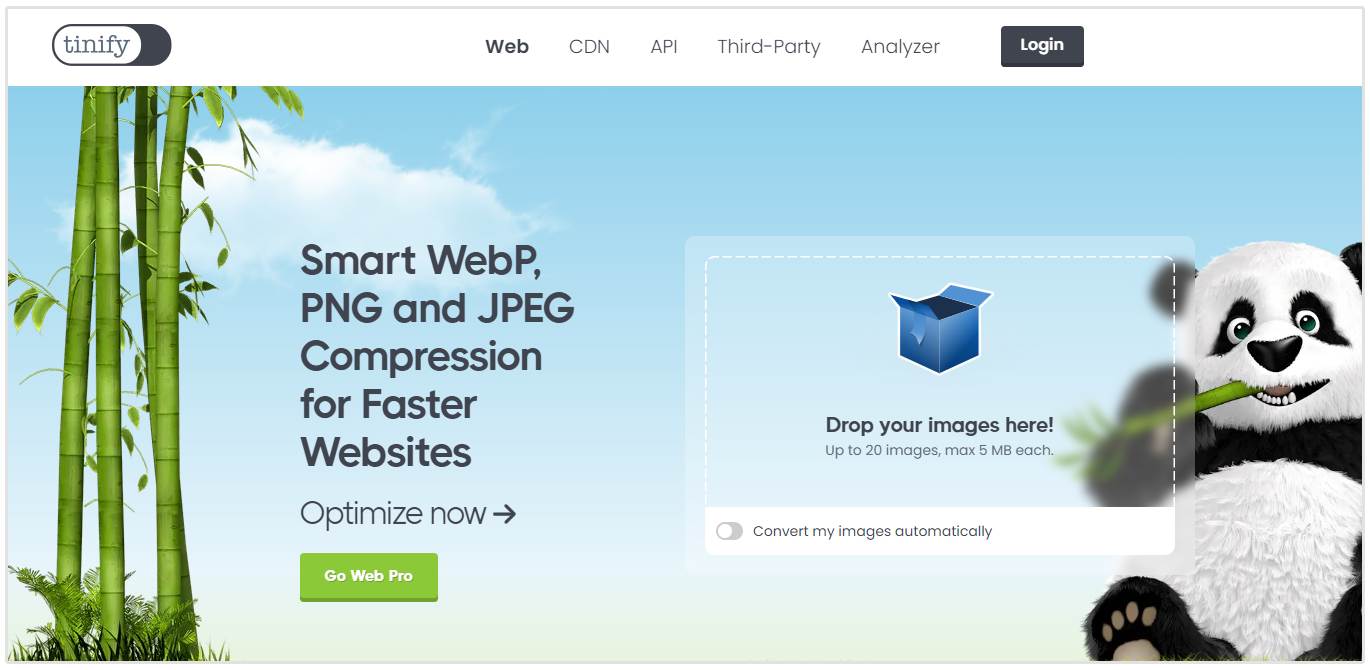
Audit Product Pages and Descriptions
Once you’ve created product pages, you need to ensure that these meet Google’s standards and guidelines.
Our comprehensive SEO auditing software allows you to analyze your product pages across various critical SEO metrics.
Uncover areas for improvement, identify potential technical issues, and ensure your product pages are optimized for SEO success.
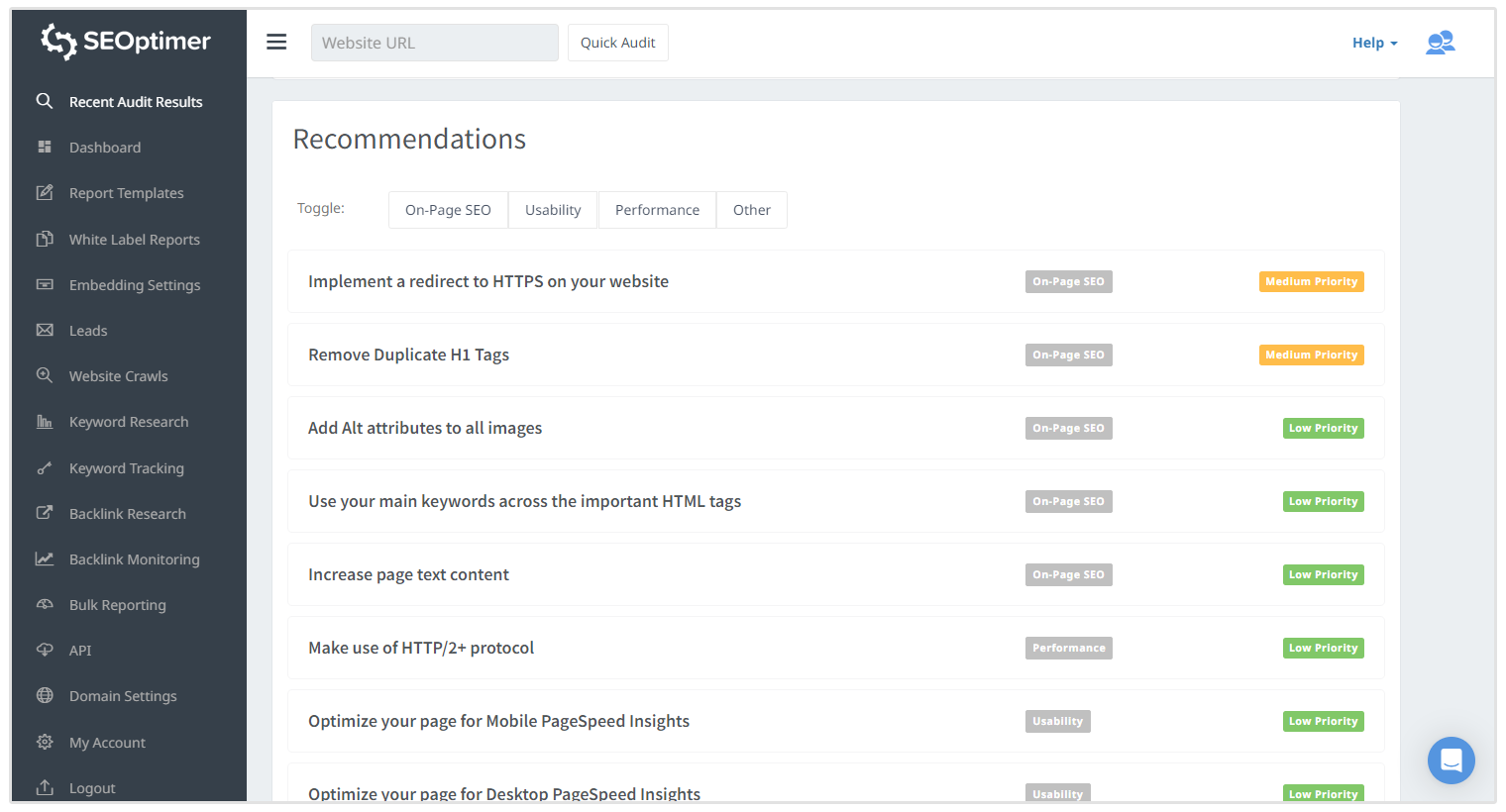
Keep an eye on your keyword rankings with our Keyword Tracking tool. Track your progress over time and make informed decisions to refine your SEO strategy and climb the search result ladder.
SEO Product Description FAQs
What to include in product descriptions?
Creating product descriptions that resonate with your audience and drive conversions is an art. To ensure your descriptions are not only informative but also persuasive, include the following elements:
- Key Features: Highlight the main features of your product, focusing on what sets it apart from competitors.
- Benefits: Shift the focus from what your product is to how it benefits the user. This helps in creating a personal connection.
- Technical Specifications: Provide essential technical information, including size, materials, availability, and any other relevant details.
- Brand Story: Weave in your brand’s story or ethos to foster a deeper emotional engagement with your audience.
- Usage Instructions: If applicable, include how the product should be used, which can be critical for items requiring assembly or special care.
- Care Instructions: Offer guidance on how to care for the product to ensure longevity, which adds value to the purchase.
- Social Proof: Incorporate reviews, testimonials, or user-generated content to build trust and credibility.
- SEO Keywords: Integrate relevant SEO keywords naturally to improve your product’s visibility on search engines without compromising readability.
- Clear CTAs: Encourage immediate action with clear, compelling calls-to-action (CTAs) that guide the customer on what to do next.
- High-Quality Images: Complement your descriptions with high-quality images that offer a visual representation of your product.
- Personalization: Tailor the description to speak directly to your target audience, addressing their specific needs and desires.
How to optimize product descriptions for voice SEO?
Optimizing product descriptions for voice SEO requires understanding how people speak when searching by voice.
Focus on using natural language and conversational phrases throughout your descriptions. Instead of just keywords, consider incorporating questions potential customers might ask about your product.
Here’s an example of an FAQ section for Beardbrand’s styling paste product. Here customers can find answer to important questions such as:
- How do I use styling paste?
- Will styling paste make my hair hard and crunchy?
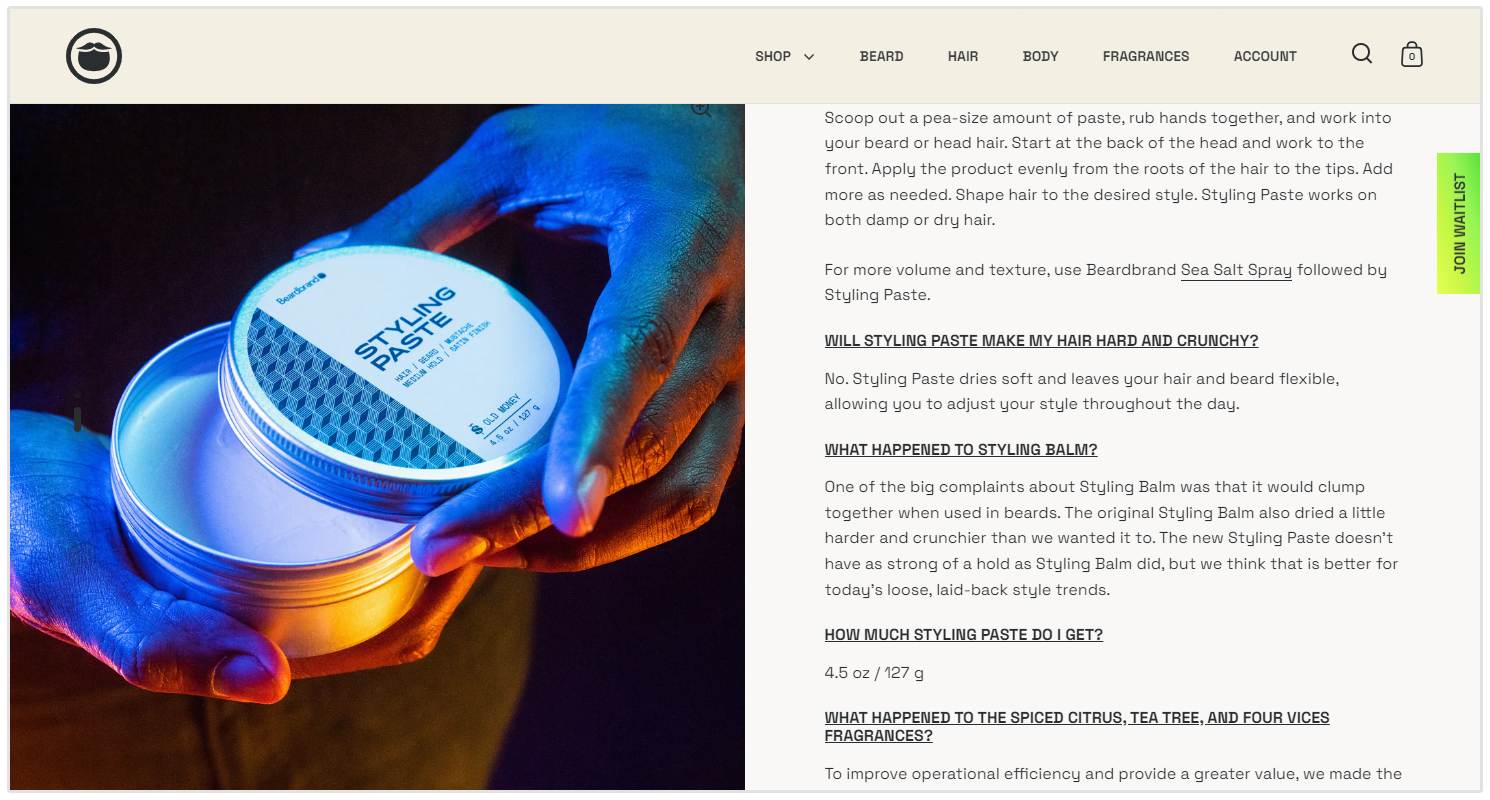
Additionally, target long-tail keywords that reflect these natural speech patterns. Finally, keep your descriptions concise and to the point, as voice search results tend to prioritize short snippets.
Are there any tools that can help me write better product descriptions?
There are several tools available to assist you in crafting compelling product descriptions. These include tools like Jasper, Rytr, and Writesonic that use AI to generate product description copy based on your input.
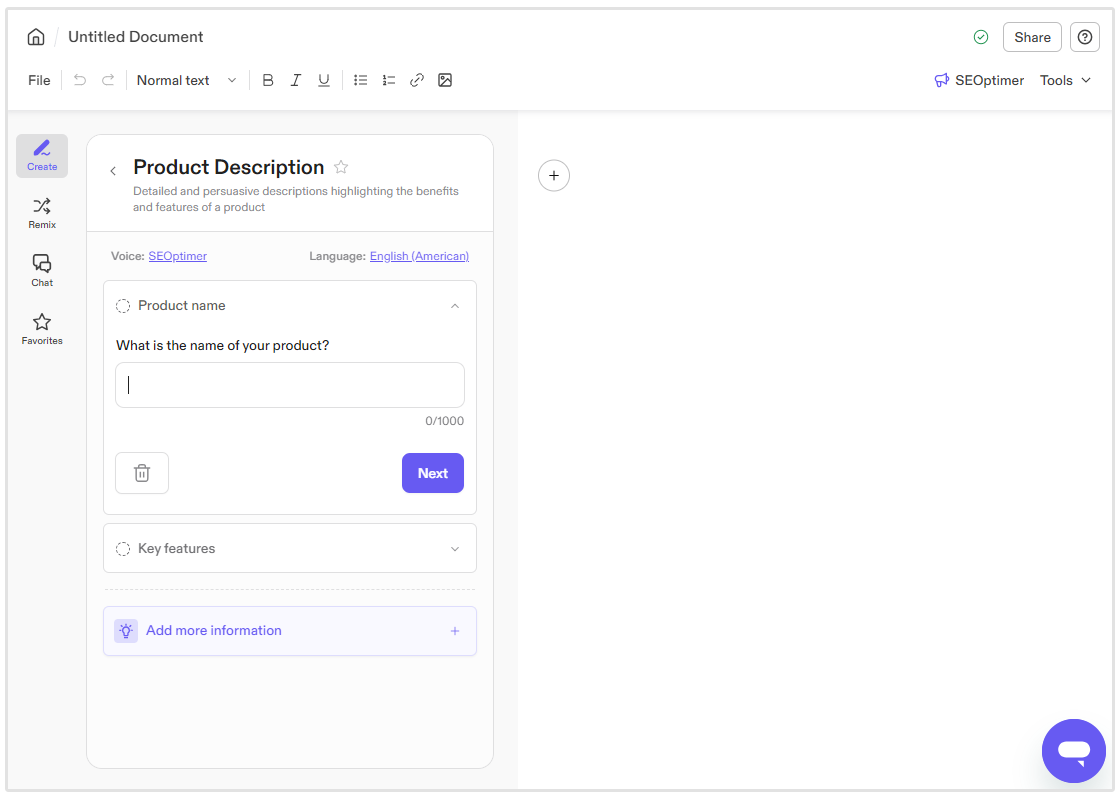
What are some common mistakes to avoid when writing SEO product descriptions?
Here are some of the most common mistakes marketers and eCommerce entrepreneurs make when writing product descriptions:
- Keyword Stuffing: Don't unnaturally force keywords into your descriptions. Focus on using them organically within a clear and informative text.
- Neglecting Benefits: Don't just list features; explain how those features translate into benefits that resonate with your target audience.
- Overly Complex Language: Avoid jargon and technical terms. Strive for clear, concise writing that anyone can understand.
- Ignoring User Intent: Don't just write for search engines; write for humans. Focus on addressing user needs and search queries.
- Copying Competitors: Don't plagiarize! Craft unique descriptions that showcase your brand voice and product's unique selling points.
- Neglecting Calls to Action: Tell users what you want them to do next. A clear CTA can significantly improve conversions.
Conclusion
Crafting compelling SEO product descriptions requires striking a balance between catering to search engines and engaging human customers.
By prioritizing clear, benefit-oriented writing, incorporating relevant keywords naturally, and utilizing strategic elements like headers and strong CTAs, you can create descriptions that both resonate with users and send positive signals to search engines.
Remember, well-written product descriptions are a powerful tool to not only improve your website's ranking but also convert website visitors into paying customers.










